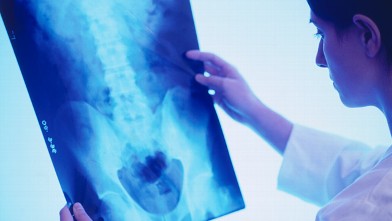
Are X-rays important?
The Griffith University in Australia recently did some research looking at patient satisfaction during musculoskeletal treatment. One of the key factors in making patients feel the most satisfied and the least depressed was having an X-ray.
Of course there are now a multitude of investigations available, and while an X-ray might make you feel better it might not give your clinician the information they need.
These are some of the most common musculoskeletal investigations used (there are LOTS more):
X-Ray – very good for giving information about bone placement and breaks. Less useful for cartilage, ligament and tendon health or bone health
MRI Scan – very focused over a small area. It shows all the tissue types within a joint (cartilage, ligaments, bones etc), as well as giving indications of the health of these structures.
CAT Scan – uses X-rays to create an MRI type picture. Good for information about internal organs but due to high levels of radiation used is not recommended without a clear medical reason.
Ultrasound – useful for small areas, especially for nerve structure and tendons or viewing movement. It is very dependent on the technician’s experience so results can vary.
Thermal Imaging – useful for “bigger picture” diagnosis with referred pain or nerve issues and a good alternative to painful nerve tests. It doesn’t give internal structural images.
Top Tips
- Get a thorough physical and clinical analysis from a medical practitioner so that they know WHERE they are investigating and WHAT they are looking for (so you get the right kind of investigation).
- Get a referral letter from your medical practitioner – there is an enormous amount of information in these scans and this ensures you get the best information about the answers you need.
- Get a copy of the report on the images, this is standard as many clinicians aren’t qualified to comment on the pictures directly.
- Get a copy of your images so you can take them to all future consultations for this problem.
- Always remember that any therapist you go to is treating YOU not your pictures!

Leave a Reply